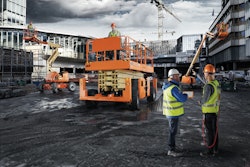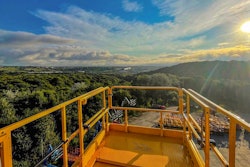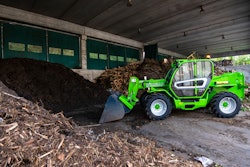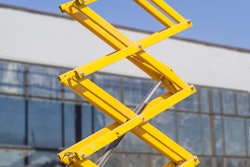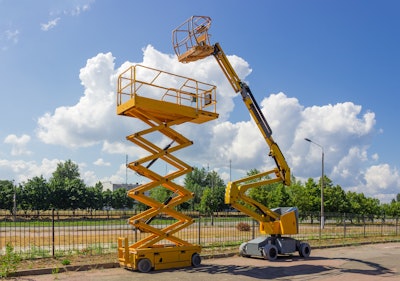
As I draft this article, we’re a week into the Russian incursion of Ukraine, and the world is still guessing how this event will impact those of us either directly or indirectly involved. If you ever doubted that you are part of a world economy, going to the gas station over the next few weeks should erase those doubts. We can only hope that a route back to stability can be found.
We are also more than two years into the coronavirus pandemic, and companies across the globe are still showing the scars of running a business during those challenging days. While many believe we are on the other side of the pandemic, entering the endemic phase of the virus, we are actually still sorting out what challenges remain and how best to manage the “new normal.”
One of the key issues that businesses face today is keeping and/or attracting workers. While some companies are merely trying to keep pace with prepandemic business levels, many are growing. Therefore, the competition is stiff for finding and hiring quality workers.
As we all know, the laws of supply and demand dictate that, as supply shrinks, costs rise; that’s no exception during a worker shortage. This means companies must introduce increases in pay, benefits and more flexible working arrangements. To balance the added cost, workers need to increase productivity and eliminate risk.
Forecasting for the Rental Industry
While demand for workers is up, it’s also clear that demand for equipment is growing, lead times for new equipment are growing (supply chain disruptions), and there’s increased spending on new construction (e.g., the $8.3 billion infrastructure bill).
The largest uncertainty facing the industry that could impact the U.S. forecast is the current rate of inflation, which was recently reported to be 7.5 percent year over year, the highest it’s been since February 1982 and well above market forecasts of 7.3 percent.
While challenges still exist, the equipment rental industry is set to flourish in 2022. The latest updated quarterly American Rental Association (ARA) forecast for equipment rental revenue now calls for a 10.2 percent increase in 2022 to reach $52.7 billion in the U.S., a slight increase from the previous forecast in October 2021, reflecting the positive influence of expected increases in infrastructure spending.
Let’s dive into some of the other issues affecting the rental industry in 2022.
Retaining and Attracting Workers
Worker shortages are not new, but they’re an increasingly challenging issue for every business segment. Construction, manufacturing, services, hospitality, medical—no business is exempt. Retaining employees is even more critical than attracting new employees that firms have to train and develop. Investment in employees—recognition, training, paths for advancement, etc.—will be required to fill positions with quality workers.
Supply Chain Shortages: Lead Times
Worker shortages impact companies worldwide. From raw materials to manufacturing to transportation of goods, all of them are experiencing gaps in the fulfillment lines for products and services. We know how a single missing component, like a computer chip, can halt the final production of a machine.
MEWP manufacturers are not exempt from the fallout of supply chain hurdles. Currently, lead times for some MEWPs are over 12 months. If the car industry is any example, sales prices for 80 percent of new cars are over the sticker price! And at the same time, manufacturing and transportation costs are also climbing between 10-20 percent or even higher.
Used Equipment Sales
As lead times for new equipment increase, demand for used equipment is also increasing and so are prices. Rouse Services report that there was an increase in average values throughout 2021, and it appears to be continuing in 2022 for both auction and retail on all types of used equipment.
As that demand for equipment grows, rental companies have to wait longer to add and renew their fleet. The motivation to sell used equipment is also lower, and consequently, values rise. A tradeoff is that used fleets age out further, repair costs increase and added labor (that is in shortage) is required to maintain equipment fleets.
Inflation and Interest Rates
The old joke that only banks and attorneys are immune to inflation may hold true, as rental companies and their customers are facing higher costs for equipment (inflation) and higher interest rates (a typical countermeasure against inflation). Will rental rates increase for the same equipment? I’d suggest that it’d better not go down, as the math just doesn’t work–higher cost of labor, higher cost of goods, higher cost in interest, etc. It’s important to note that the forecast for increased rentals does not mean increased profits–as new and used equipment costs rise, so should the rental rates for the equipment.
Stringent Emissions Regulations
The manufacturing of equipment that complies with government requirements for lower emissions is driving up the cost of machines. However, electric vehicles are becoming more visible, reliable and more competitive. Electrification will be the dominant direction for equipment design, production, and purchase this year.
Increased Productivity and Reducing Costs
What can you control in your business despite everything going on in the world around us? You can’t control the increasing cost of equipment or even the cost to transport it to you. You can’t directly impact inflation or interest rates. You can’t even create demand for the equipment. What you can do is plan and strategize how you will adapt and respond to change. If you don’t like change, you’re doomed, as the last decade has thrown more change at businesses than could ever be predicted.
I suggest that your single-most influential tool to addressing the unknowns businesses will continue to face in the next decade is surrounding yourself with great people–in every aspect of your business–and keeping them happy, including your receptionist, your CFO, inside and outside sales, service technicians and drivers, anyone who interacts with your customers, and those who support them.
Be a company that YOU would want to do business with. Train and invest in your people! Make sure they know you value them by your actions, not just your words. Ensure that after all of your hard work, your business is growing and reaping the profits you deserve.
![Tony Groat Edited 5b57430ec070e[1] Headshot](https://img.forconstructionpros.com/files/base/acbm/fcp/image/2024/06/Tony_Groat_edited.5b57430ec070e_1_.667c30792412c.png?auto=format%2Ccompress&crop=faces&fit=crop&h=48&q=70&w=48)




